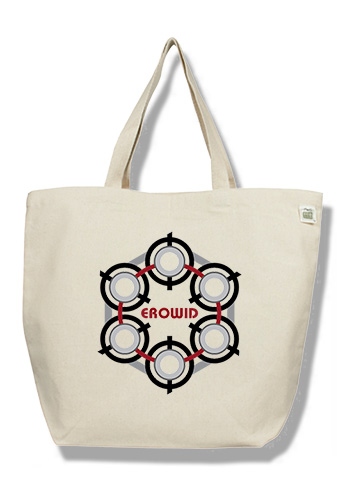History of BZP
Edited, HTML, Published by Erowid.org
Citation: Connelly B. "History of BZP". Erowid.org, Nov 2003: Erowid.org/chemicals/bzp/bzp_article2.shtml.
1-Benzylpiperazine (BZP) was originally synthesized by the Wellcome Research Laboratories as a potential antihelminthic2 (anti-parasitic) but was found to cause a reversal in the effects of tetrabenazine (a reserpine-esque drug, stopping vesicular monoamine accumulation) in rats and mice, indicating potential antidepressant activity6. It was found that BZP caused hyperactivity, involuntary head movements and a reduction in reaction times in shock avoidance studies, properties also found in amphetamines.
As testing an amphetamine-like substance on depressed subjects during a clinical trial could cause unnecessary stress to them, the extent of the amphetamine-like effects needed to be assessed. This instigated two studies, first Bye et al. (1973) and then Campbell et al. (1973), which compared the physiological effect of BZP and amphetamine on healthy human volunteers and compared the subjective and physiological effect of BZP and amphetamine of former amphetamine addicts, respectively. The results of these two studies showed that BZP was very similar to amphetamine1,2 (although there were some interesting differences, the mechanisms for which wouldn't be discovered for another 13 years) and that clinical trials would be ill-advised2. That was the last research the Wellcome Institute did into BZP.
Some five years later, a group of Hungarian scientists working for EGIS Pharmaceutical Works delivered (in very broken English) a paper at the 7th International Congress of Pharmacologists entitled "The antidepressant activity of a new piridincarbonic acid derivative, EGYT-475". It was expected that EGYT-475 (later to be marketed as Trelibet) would have antidepressant activity as it antagonized the behavioural effect of reserpine4, inhibited the depletion of dopamine induced by reserpine, and inhibited the increase of DOPAC induced by reserpine3. But studies which tried to test the effect of Trelibet on cell culture, or tried to find its binding sites, found it had no action and no high-affinity binding sites[3]. It was concluded that Trelibet itself was inactive, and that the active compound was in fact a metabolite of Trelibet, a chemical they code-named EGYT-2760 otherwise known as 1-benzylpiperazine5.
EGIS Pharmaceutical Works and the Semmelweis University of Medicine, Budapest did several studies into the mechanism of BZP's action, and I believe marketed Trelibet. It is still trademarked in the UK.
As testing an amphetamine-like substance on depressed subjects during a clinical trial could cause unnecessary stress to them, the extent of the amphetamine-like effects needed to be assessed. This instigated two studies, first Bye et al. (1973) and then Campbell et al. (1973), which compared the physiological effect of BZP and amphetamine on healthy human volunteers and compared the subjective and physiological effect of BZP and amphetamine of former amphetamine addicts, respectively. The results of these two studies showed that BZP was very similar to amphetamine1,2 (although there were some interesting differences, the mechanisms for which wouldn't be discovered for another 13 years) and that clinical trials would be ill-advised2. That was the last research the Wellcome Institute did into BZP.
Some five years later, a group of Hungarian scientists working for EGIS Pharmaceutical Works delivered (in very broken English) a paper at the 7th International Congress of Pharmacologists entitled "The antidepressant activity of a new piridincarbonic acid derivative, EGYT-475". It was expected that EGYT-475 (later to be marketed as Trelibet) would have antidepressant activity as it antagonized the behavioural effect of reserpine4, inhibited the depletion of dopamine induced by reserpine, and inhibited the increase of DOPAC induced by reserpine3. But studies which tried to test the effect of Trelibet on cell culture, or tried to find its binding sites, found it had no action and no high-affinity binding sites[3]. It was concluded that Trelibet itself was inactive, and that the active compound was in fact a metabolite of Trelibet, a chemical they code-named EGYT-2760 otherwise known as 1-benzylpiperazine5.
EGIS Pharmaceutical Works and the Semmelweis University of Medicine, Budapest did several studies into the mechanism of BZP's action, and I believe marketed Trelibet. It is still trademarked in the UK.
References #
- Bye, C., Munro-Faure, AD., Peck, AW. Young PA. A Comparison of the Effects of 1-Benzylpiperazsine and Dexamphetamine on Human Performance Tests. European Journal of Clinical Pharmacology. 6, 163-169, 1973.
- Campbell, H., Cline, W., Evans, M., Lloyd, J. and Peck, AW. Comparison of the Effects of Dexamphetamine and 1-Benzylpiperazine in Former Addicts. European Journal of Clinical Pharmacology. 6, 170-176, 1973.
- Fekete, MIK., Szentendrei, T., Hermán, JP. and Kanyicska, B. Effects of reserpine and antidepressants on dopamine and DOPAC (3,4-dihydroxyphenylacetic acid) concentrations in the striatum olfactory tubercle and median eminence of rats. European Journal of Pharmacology. 64, 231, 1980.
- Kosóczky, I., Grasser, K., Kiszelly, E., Toncsev, E. and Petöcz, L. The antidepressant acticity of a new piridincarbonic acid dervative, EGYT-475. 7th International Congress of Pharmacology. Abstract No. 486. 1978 Pergamon Press. Paris.
- Magyar, K. Pharmacokinetic aspects of the mode of action of EGYT-475, a new antidepressive agent. In: Magyar, K., Szüts, T., Vereczkey, L Eds. Symposium of Pharmacokinetics and drug metabolism. Pp152-164. Akadémiai Kiadó-Pergamon Press, Budapest, Oxford, 1988.
- Miller, AA., Green, AF. and Young, PA. Unpublished work. 1971. As Cited by Campbell et al., 1971.


